The Lavender Scare
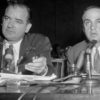
How did the conditions of the Cold War lead to the criminalization of lesbian, gay, bisexual, transgender and queer Americans?

Instructional Resources for California Educators, Students, & Families

How did the conditions of the Cold War lead to the criminalization of lesbian, gay, bisexual, transgender and queer Americans?
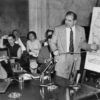
Students will study the treatment of gay and lesbian federal workers during the period of McCarthyism.
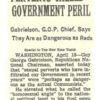
Students will analyze 6 -10 (or more depending on the class) primary and secondary sources. These sources will serve as historical evidence for students as they determine their response to the inquiry question. After students read and annotate each source, they will then collaborate and create a DBQ Poster. The DBQ poster process requires students 1) to sort the sources into 2 or more categories, 2) to consider all historically relevant content and 3) construct a group thesis that directly answers the inquiry question.
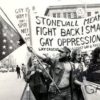
In this lesson, teachers will contextualize the LGBT rights movement by answering the question introduced in the History-Social Science Framework for California Public Schools: “How did various movements for equality build upon one another?” While activists fighting for LGBT rights utilized similar tactics and had some shared goals of those fighting for Civil Rights broadly, LGBT people in racial minority communities faced additional discrimination. Moreover, many fighting for broader Civil Rights did not consider sexual preference or gender identity as apart of their fight. In this lesson, students will explore historical perspectives to determine to what extent the movement for LGBT rights was or was not part of the broader movement for Civil Rights of the 1970s and 1980s. Students will read, annotate and categorize several primary sources to write a short essay describing and supporting their prospective with evidence from the texts.
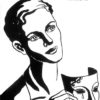
Students will experience strategies that will help them analyze primary sources, examine and use literacy strategies that will help them access primary sources, engage in close reading and text-based discussions in various settings including in pairs/groups and as a classroom and generate at least one writing task that is Common Core based.
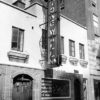
This lesson plan explores the history of LGBTQ Liberation from 1959 - 1979, and is a companion to the exhibit "Stonewall 50: The Spark That Lit the Flame" from the Center on Colfax's Colorado LGBTQ History Project. It includes primary sources and panels from the exhibit designed to weave together, in cooperative small-group learning, the narrative of Stonewall with the LGBTQ history of Denver. Students will use primary sources not widely available, and will understand the context leading up to Stonewall and the changes which occurred there after. From the Mattachine Society, the Black Cat Tavern and Compton's Cafeteria Riot, to the Denver Gay Revolt, Harvey Milk, as well as a detailed timeline of the riots, and the diverse voices there-in. Your students will be among the first generation of Americans to know and tell these stories. Their words will shape the future and change the world. (Includes: Bibliography, Teacher Resources, Understanding By Design, Colorado Content Standards Aligned, Grades 8-12). During this lesson students will answer a question open to historical debate "Why were the Stonewall riots the moment that sparked the LGBTQ Liberation Movement in American History?" Students will then be given panels from the Stonewall 50 history exhibit talking about the history of Stonewall: the events leading up to Stonewall, the events of the riots themselves, and the events and organizations that developed after the riots, such as the Gay Activist Alliance (GAA) and Gay Liberation Front (GLF), as well as the first Denver LGBTQ pride event, and the National March on Washington for Gay & Lesbian Rights in 1979. Students will be given 15 minutes to read panels from the exhibit underlining the important names, dates and events. Students will then share what they learned. Students will then create their own posters outlining the events of the riots as a formative assessment.
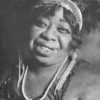
This activity is designed as a fun and interactive way to raise students’ awareness of LGBT people and the contributions they made in the history of the United States. Students will learn about key events in the LGBT civil rights movement. Students will have an opportunity to create signs regarding these events to spread awareness throughout the school.
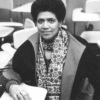
In this lesson, teachers will contextualize the LGBT rights movement by answering the question introduced in the History-Social Science Framework for California Public Schools: “How did various movements for equality build upon one another?” While activists fighting for LGBT rights utilized similar tactics and had some shared goals of those fighting for Civil Rights broadly, LGBT people in racial minority communities faced additional discrimination. Moreover, many fighting for broader Civil Rights did not consider sexual preference or gender identity as apart of their fight. In this lesson, students will explore historical perspectives to determine to what extent the movement for LGBT rights was or was not part of the broader movement for Civil Rights of the 1970s and 1980s. Students will read, annotate and categorize several primary sources to write a short essay describing and supporting their prospective with evidence from the texts.

This lesson plan covers queer film representation from the 1920’s to 1970’s, specifically focusing on the impact of the Motion Picture Production Code, otherwise known as the Hays Code. The goal of this lesson is to explain the historical context behind LGBTQ+ stereotypes that still persist today in Western media.